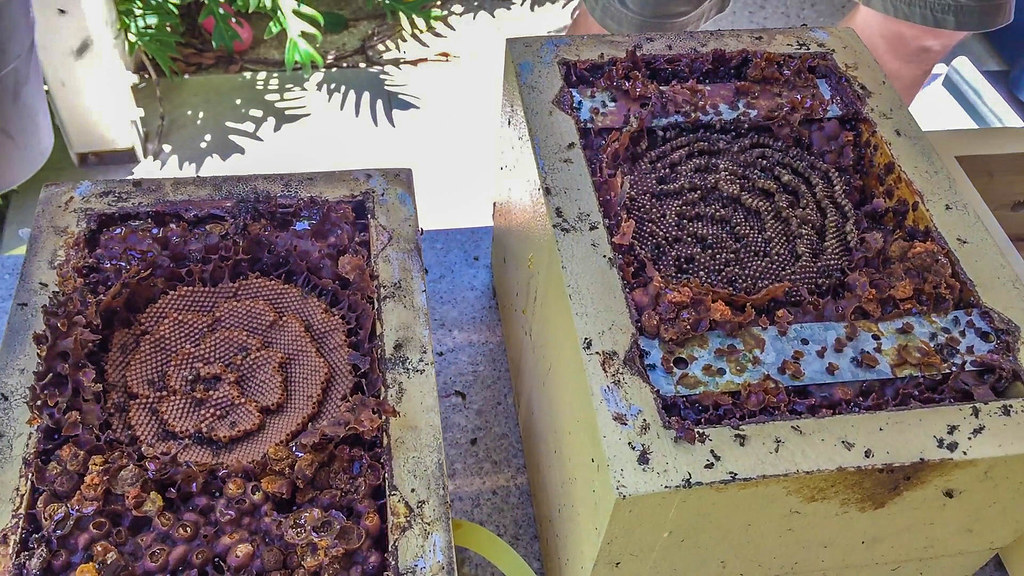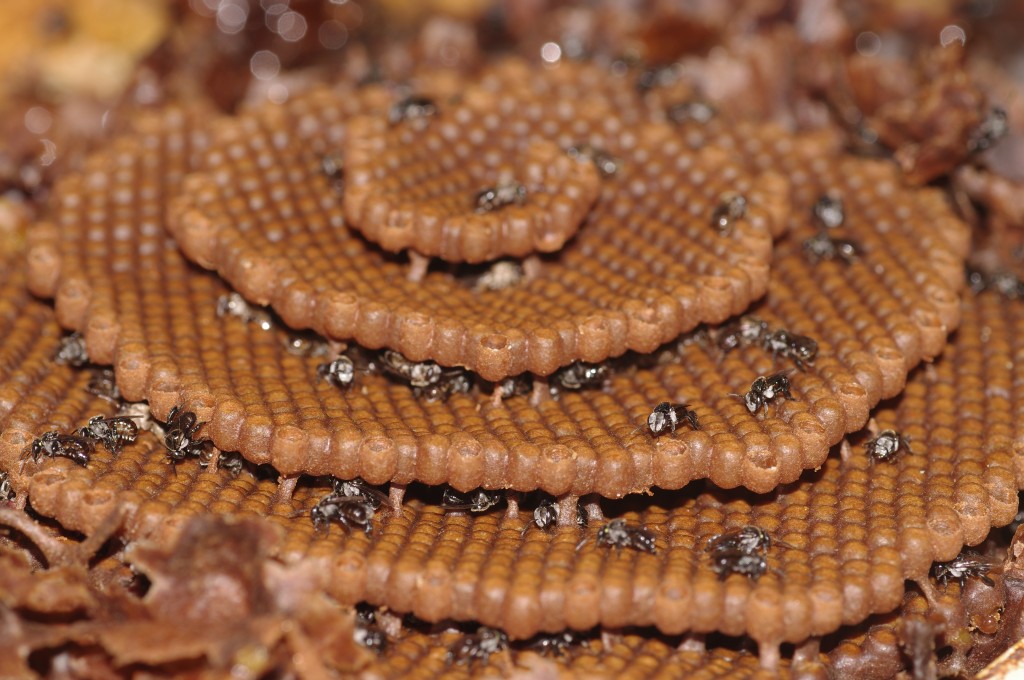This post may contain affiliate links. If you make a purchase, My Modern Met may earn an affiliate commission. Please read our disclosure for more info.
Once again proving that nature is the best architect, we’re in awe of the spiraling hives built by Sugarbag bees (Tragonula carbonaria). Native to Australia, they not only build an innovative hive, but they’re also rather kind—they don’t sting. Sugarbag bees are one of 21 genera of stingless bees, 14 of which call Australia their home.
These medium-sized bees are strong fliers that can travel up to 1 km (0.62 miles), though they prefer to stay close to home if given the choice. Busy year-round, the colony creates magnificent spiraling structures that look more like a Zaha Hadid building than a regular beehive. Dr. Tim Heard, an entomologist who has been keeping stingless bees since 1985 and wrote the Australian Native Bee Book, calls them “highly social insects.”
It’s unclear exactly why they build their hives in such a unique form. The entrance and surroundings are covered with a thick layer of cerumen—a mix of beeswax and propolis—and each cell is sealed to keep out microbes. Interestingly, most stingless bees are also monogamous, meaning a colony that’s been divided may actually live on without a queen.
You might ask yourself how these bees mount a defense if they don’t sting. First, each hive only has one entrance, giving enemies fewer ways to get inside. And even though they don’t sting, they do bite. Lastly, they rely on numbers. When an intruder is suspected, they’ll sometimes form a giant cloud of thousands of worker bees known as a “fighting swarm.” They then swoop down on the enemy, wrestling it to the ground and often killing it. Unfortunately, this often means death for the bees themselves, a true act of altruism for the safety of the colony.
Interested in beekeeping and wondering where you can get some Sugarbag bees? If you live in the correct area of Australia, Heard’s organization Sugarbag Bees sells fully stocked hives.
Sugarbag bees are stingless bees native to Australia that build incredibly intricate spiraling hives.
Australian entomologist Dr. Tim Heard leads workshops on how to split native bee hives, helping educate the public through his organization Sugarbag Bees.
 Sugarbag Bees: Website | Facebook
Sugarbag Bees: Website | Facebook
h/t: [Inhabitat]
Related Articles:
Ingenious Beehive Extracts Honey On Tap Without Disturbing Bees
Beautiful Wax Sculptures Formed by Collaborating with Honeybees
Designers Create Real Observation Beehive You Can Mount on Your Wall at Home
New Fascinating Macro Photos of Bees by the United States Geological Survey

